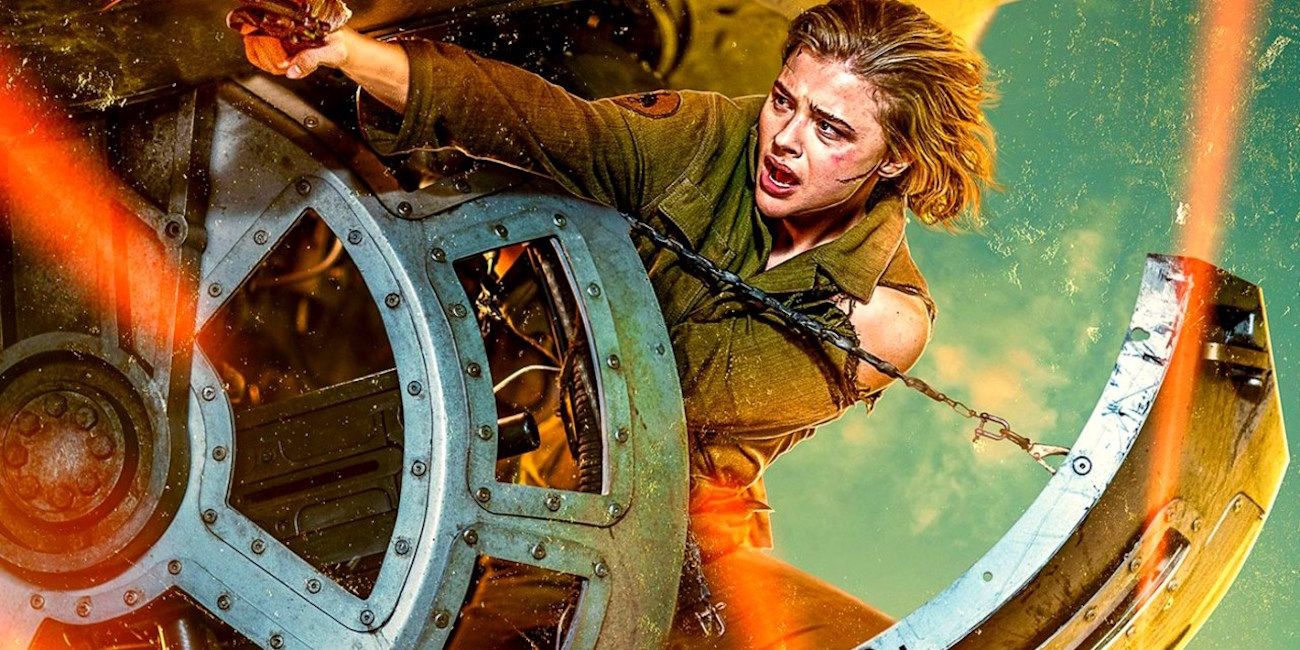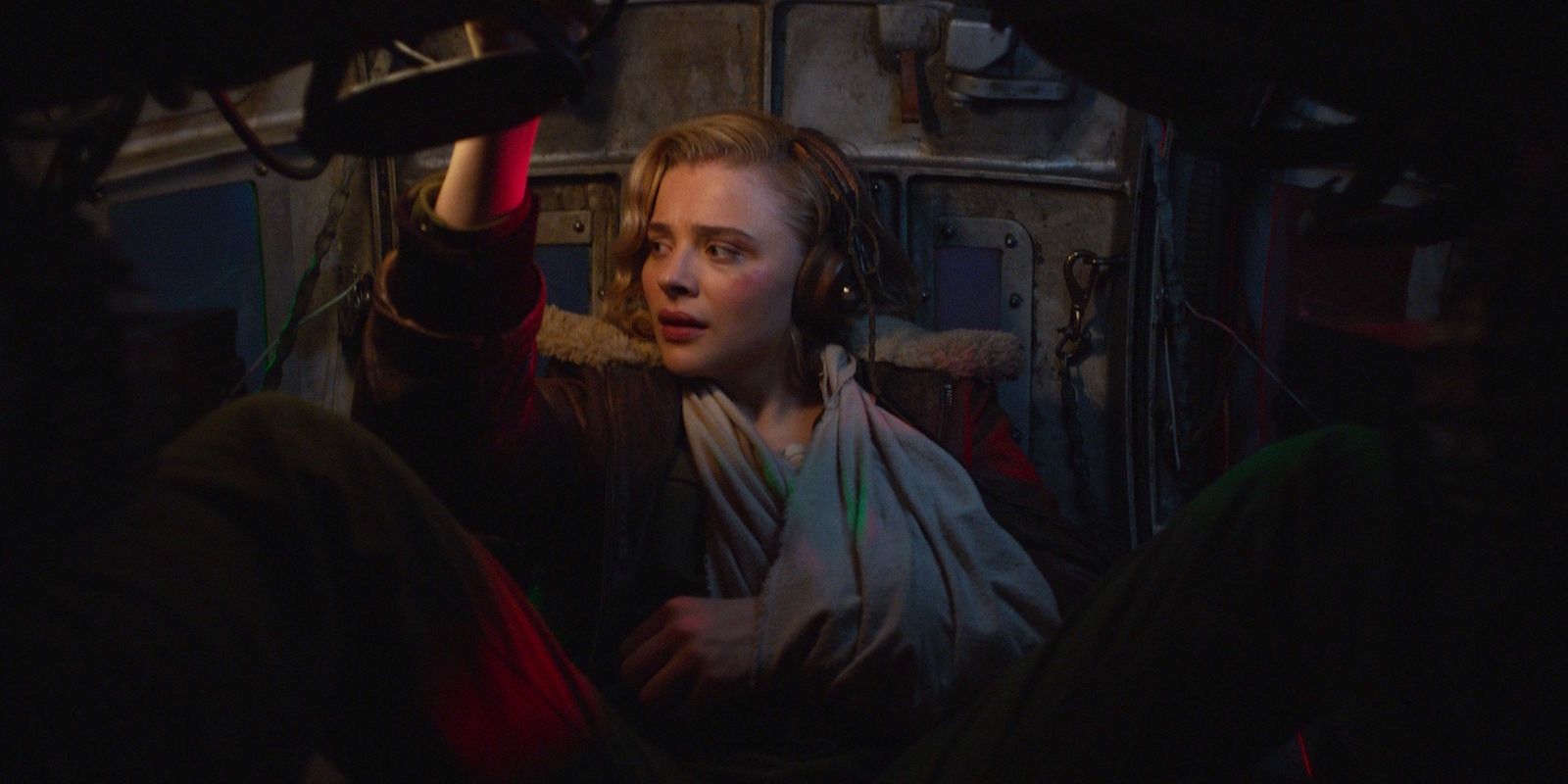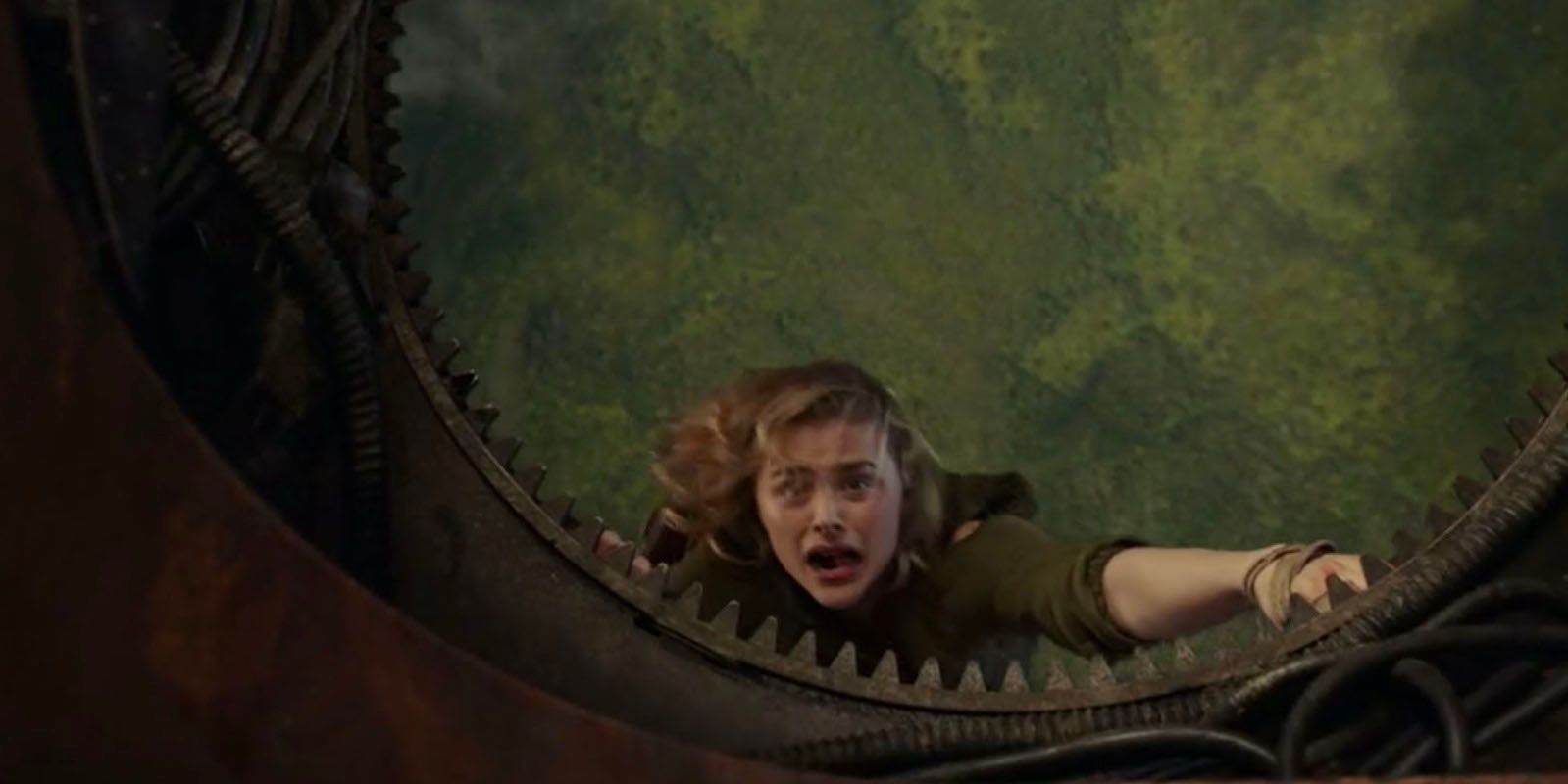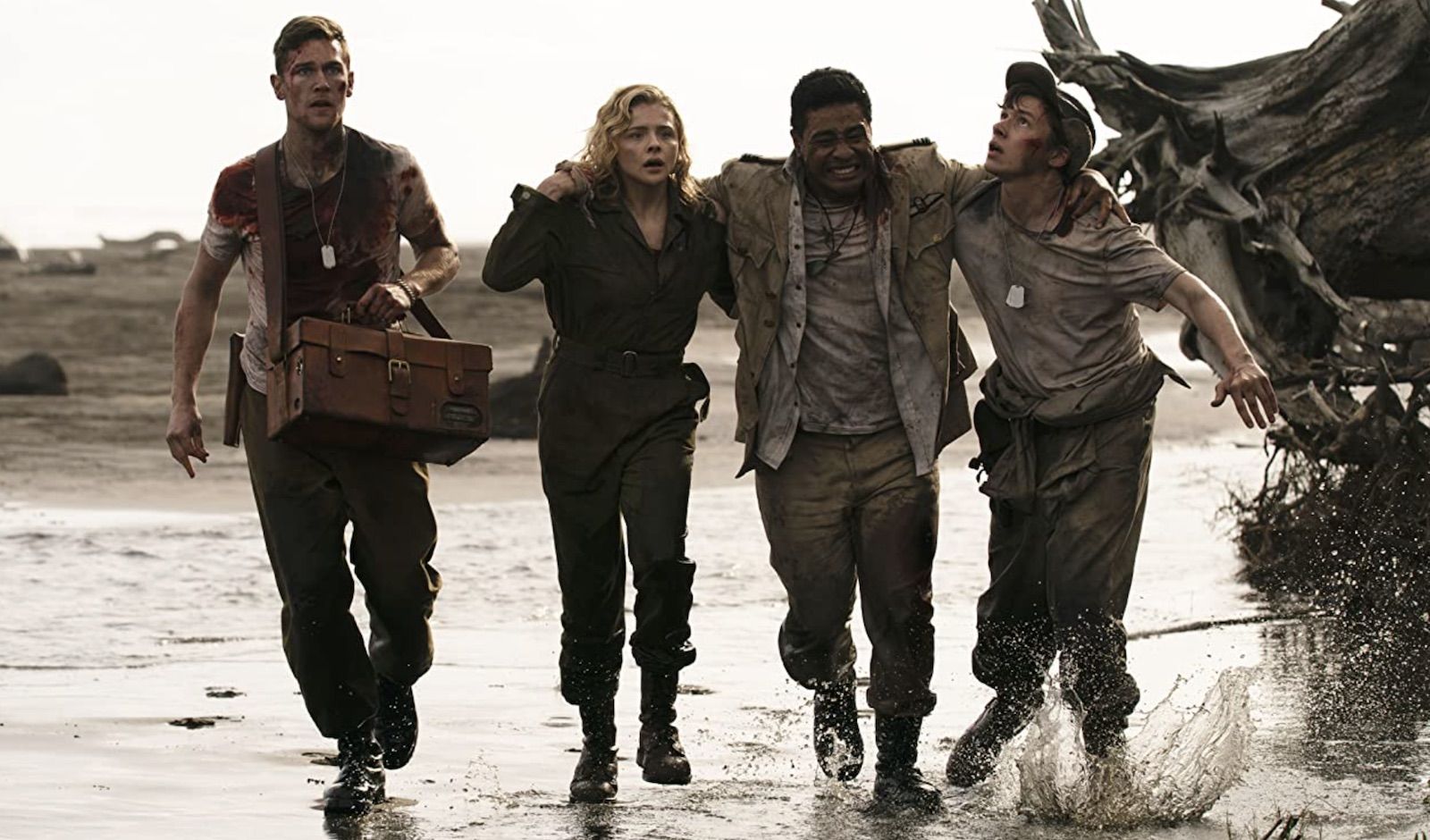WARNING: The following article contains spoilers for Shadow in the Cloud, now available in select theaters and VOD.
The new year is kicking off with a bang with the release of the film Shadow in the Cloud, starring Chloë Grace Moretz. In the World War 2-set horror-action hybrid, Moretz's Maude Garrett encounters all manner of challenges, from misogynistic men to an attack by the Japanese to a deadly gremlin, while she's stuck in the gun turret of an Allied forces plane. Director Roseanne Liang helms the film with style and panache, as she confidently steers Maude through each new problem, creating an exhilarating movie that will draw in viewers with its compelling story and innovative technical choices. On the strength of her work on the film, Liang was named one of Variety's 10 directors to watch in 2021 -- a well-deserved distinction.
CBR connected with the New Zealand-based Liang to discuss Shadow in the Cloud, including what she loved about main character Maude Garrett, how some of the film's amazing stunts came together, why she felt Maude's confrontation with the many adversities that come up in the film mirrors real life and more.
CBR: How did you get involved with Shadow in the Cloud?
Roseanne Liang: The project came to me in script form, and I connected with the script. But the producers who brought the script to me felt that maybe it would be best if the writer wasn’t involved. So the producer went about removing the writer from the project and then I rewrote it. Well, not a page one rewrite, but it was a substantial rewrite, enough to get a cowriter credit. [Editor’s Note: The co-writer of Shadow in the Cloud, Max Landis, was accused of emotional, physical and sexual abuse by multiple women in 2019.]
How did you want to change the script when you re-wrote it? What were the things you felt needed to be adjusted?
I felt like we needed to go deeper in terms of character motivation, not just of Maude Garrett, but also with the men. We needed to bind it all together a bit more. I did love that it crossed genre and was a tonal tight rope. That's something that I really loved about it, that it was unpredictable and that you just could not predict where this was going. But the logic lines, the thematic lines and the tonal lines needed to be strengthened, I thought.
Chloë Grace Moretz is in almost every frame of the film. We stay with her and see her reactions even when other people are performing the film’s action. What was behind the decision to have her onscreen so much?
I felt that was my connection to the story actually, was this empathetic feeling of always being in her shoes and always being inside her mind. I felt that it's important to me for people to really understand where she's coming from and understand what kind of experience she’s going through. Sometimes it's traumatic, sometimes it's claustrophobic, sometimes you don't know whether she's telling the truth or not, like whether she’s lying. And I felt that, for me, that's possibly the biggest connection, for me, because she is acting out of self-interest, but she's also heroic in a way that I feel is really grounded and empathy delivering.
What was it like working with Chloë to bring Maude Garrett to life?
Chloë was involved relatively early, and I think what we both loved about Maude Garrett was that she was imperfect. That she's not all good and all selfless and all kind. She is selfish and doesn't make the best decisions. [She actually] makes really dumb decisions. But that felt real to her. Especially in this year. We shot it pre-pandemic, but finished the film post-pandemic. And it feels more relevant somehow because, in the face of mounting adversity, just when you thought it couldn't get any worse, it gets worse again, and she just reaches deep inside herself into the vast wells of strength that she didn't know she had to pull out more, to pull out more resources within herself to fight these adversities. And I think we both really liked that, and Chloë wanted to lean into her imperfections, which is a really fun thing for an actor and director to do together.
There are some amazing stunts in the film. Were those mostly Chloë?
Yeah, it's mostly Chloë. We did have a stunt performer doing some things, but Chloë, as you know, from childhood has been involved in stunts. And Chloë, in addition to being a very thoughtful dramatic actor, is also very technically skilled. She can learn 20 beats of a fight within minutes. She was giving her stunt coordinator a run for his own money. They had a pull-up competition going during our shoot about who could do more pull-ups than the other. And she really worked hard physically for this role and has the, I guess, physical skill to pull it off and look like her punch really hurts. Like she punches hard, I would not like to be on the receiving end of her punch, so she can handle herself physically on a technical level as well. So she's a perfect package for a role like this, I think.
Did you imagine the stunts as they exist in the film at the script stage or did they get baked in later?
Some of them were in the script to begin with. Like the most bonkers part obviously -- it’s in the trailer, so I'm just going to say it -- it’s her falling from the plane and then getting blown back into the plane from an explosion. So that was done in a really interesting way. We used movie magic to do that because to do an actual fall was going to be too dangerous on the shoot that we were at, so we actually did a horizontal fall, which is kind of crazy when you think about. She was falling sideways on a rig with various ropes attached.
In terms of the fights, mostly that she had with the monster, we had her fighting with a guy in a gray suit, which often was our stunt coordinator. And then our visual-effects guys were on hand to just make sure that they could, I guess, color the gray man in to make it look like a gremlin. So all that’s a bit of a mind trip as well, like trying to make that work. But I think [visual effects company] Weta Digital did an incredible job in terms of the connectivity between the two beings. It is CGI, but it's really fine CGI, I think, and it has that visceral nature to it. I love visceral action sequences. I'm a real action-design nerd, and we got to play, we got to play a lot with this.
Speaking of the gremlins, what made you decide to include them? And why did you decide to show them in so much detail in close-up?
Well, there's lots of reasons to include the gremlins. Again, the gremlin was in the script to begin with. And this may not be part of mainstream lore, but gremlins are to World War 2 Air Force pilots what aliens are to Roswell in the 1950s. Air Force pilots in World War 2 and World War 1 would swear that gremlins were responsible for things that went bad on a plane. And sometimes it was, they'll just blame any inexplicable happening on gremlins, but then there was actual findings of gremlins, people would draw diagrams of gremlins they swear they saw on missions. Sometimes they were mischievous, sometimes they were benevolent and this was stuff that I found in research of this movie. So gremlins were a part of that time, they were a lore of that time.
And then when we started designing the gremlins, I think most people, when they think of them, they think of the 1980s Steven Spielberg-produced movie, but we wanted to do something slightly different that was true to the lore of the time, of the 1940s, but with our own take on it that was a very visceral kind of feral animal. Unpredictable, sexually dangerous, hungry animal that could join the ranks of great movie monsters, like Alien and Predator. That was always our hope, that we could make a creature that sort of sticks in your mind a little bit and accesses sort of the abject parts of ourselves and stay around to sort of haunt us in our dreams hopefully -- and the cost, I guess.
Even though we don't see them as much as Chloë, the guys play an integral role in the film, but most of their dialogue is pretty misogynistic. How did you work with them?
This started way back in the scripting stage. [The characters in the movie consist of] seven men and one woman and the seven men tend to become one phalanx of toxic misogyny. And with the producers, we all agreed that the seven men needed to be a rainbow of toxic masculinity. So they each attack her in different ways. Some of them attack her sexually, some of them attack her on an experience level, some attack her on a truth-telling sense. And so each of the seven men has a character with which to attack her and together they form a wolf pack. So, making their voices distinct from each other was something that happened in the script stage.
Then when we shot it, we actually had actors working live with Chloë even though she wasn't with them, they weren't in the same space. But they were in a shipping container in the car park and had a live audio line into their headphones. So everything that they said to her, she heard, so that they would respond rhythmically and truthfully to each other. Sometimes I'd encourage the men to improvise. Sometimes I'd encourage Chloë to give back as good as she got, which she was really happy to do. And the men just naturally formed this camaraderie. We did acting exercises with the men in the morning. We did a warm up with them [...]. But when you're spending 10 to 12 hours in a shipping container, you just can't help but become a bit of a family or a wolf pack. And the men formed a camaraderie that, not necessarily by design [...], but made Chloë feel like she was on the outs, that she was an outsider in this group, and I think that really comes across in the performance.
We also got notes at script stage about not being too on the nose. So I encouraged the guys to, I guess, reach inside to their locker room selves, the locker rooms that they'd been in, and they'd come back with these really great insights into how men one-up each other. You know, by themselves, individually men are probably nicer than when they are in a pack where they're [doing this] sort of monkey dance in a sense of, "I'm going to give a joke and then I'm going to come in with a joke that's better than your joke." This vying between them to impress each other vocally was something that I encouraged in the shipping container that they were acting in.
So some of the words that you hear, the most misogynistic parts of the movie where you're feeling like she's being set upon, I think accurately reflect how men are in packs around women. People can screenshot conversations with men now and normally people would be like, "Well, that's too on the nose, that seems like over-the-top script writing." But to me, I think it's important to lean into the ugliness of that sometimes because that's how it is in real life. Some people do not believe the levels to which men speak to women with impunity in this day and age. I mean, thank God we have screenshots and records because most people would just dismiss it as a fiction. But it's not a fiction, it happens every day, every minute, it's happening now. And just to put it so bluntly onscreen for a little bit, I intend to do that, I intend to confront that aspect of gender politics.
There's a lot going on in the film. There's the misogynistic men, there's the gremlin, there's the attack by the Japanese. What was your process of making sure you could balance and give enough air to all those different aspects of the film?
That was a real tough thing. I think when I first read the script, that was the part where you're going, "Really, do we need another adversity? Why do we have this? Why do we have this?" I really needed to interrogate why there was so much on top of each other. It would have been enough to just sit with the men. It would've been enough just to sit with the Japanese. It would've been enough to just sit with the gremlin. Why all those things at once?
And I think what I came to was that it felt a bit like life to me. It was an allegory of, being who I am, being a mother and a woman and a person of color, all those things -- and I'm not saying that only a female person of color parent feels this way -- because I think everybody feels this way no matter who they are. Whether they have privilege or whether they don't, I think everybody feels like it's adversity on top of adversity sometimes. And how Maude Garrett deals with it -- on top of each other, one after another, just when you think it couldn't get any worse, it gets worse again, just when you think we couldn't add another adversity, there's another layer of adversity -- I just think that that feels like our times right now.
You know, on top of climate change, there's people believing disinformation, on top of disinformation, there's a pandemic. [...] There's just this tidal wave of adversity coming towards us as humans and the deep wells of strength and courage, but also fear and rage inside of us that these unlock is something that I wanted to explore in this movie. Which is why I felt, in the end, it justified having so many adversities on top of each other. And it was a tight rope. I think sometimes it does feel like maybe there's too many things happening, but without being too, I guess, dramatic about it, that's how life feels right now for me. Do you feel like that? I just feel like there's just so many things flying at us at all times from different directions.
I think you have a very good point because it really does feel like that a lot of the time. It's exhausting.
Yeah. It is exhausting, but also, we can take it, in a way. Not that we want to take it, but if we had to, we can take it. The lines that really resonate with me in the script are, well firstly, "You have no idea how far I'll go," which is, "You don't know the resources that I have inside of me that you can't see." And I think that, again, that's not just true for women of color, I think that's true of anyone who has felt belittled or prejudiced [against] or faces adversity.
But the other one is, "If you won't, help me, I'll do it myself." Which is a line that was in the script, I'm not entirely sure if it's in the movie anymore, but certainly that idea is there is that, "It's fine. If you're not going to help me, I'll help myself and I'll do it with style." And sometimes it feels like that too. You know, I don't need others to get stuff done. It's not like we live alone in this world, but sometimes when it feels like too much, we have those wells of strength inside ourselves to be able to deal with it.
Shadow in the Cloud, directed by Roseanne Liang and starring Chloë Grace Moretz, Nick Robinson, Beulah Koale, Taylor John Smith and Callan Mulvey, is available now in select theaters and on VOD and digital.




